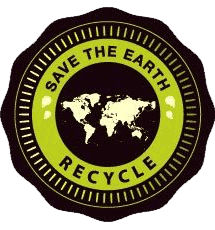Have you ever wondered what will happen to your devices when they eventually break down? The short answer to this is that there are two things that could happen. The first is that they can be recycled, or they can go to a landfill. A landfill is a concerning option as the pollutants emitted by broken-down electronics can have a long-lasting negative impact on the environment.
As new electronic devices are constantly released, and society and social media encourage people to have the best and newest available, the number of discarded devices is increasing. However, so has the drive to recycle the old devices. Often devices are disposed of while still working due to upgrading when out of contract.
You fill up the dumpster with any unwanted debris, then we pick it up and dispose of everything in a nearby landfill.
Manufacturers and recycling companies are beginning to offer more incentives to recycle electronic devices. This is to allow them to reuse parts as the creation and distribution of parts have become increasingly expensive.
How Bad is the E-Waste Problem?
The volume of E-Waste is increasing at an alarming rate. In the 5 years from 2014 to 2019, the volume increased by 21%, increasing to 53.6 million tons in 2019. The concerning part of this data is that the amount of e-waste being recycled in the US has decreased.
In 2013 the United States generated 3.1 million tons of e-waste but recycled 40.4% of this. In 2019 the United States generated 6.9 million tons of e-waste, of which only 15% of this was recycled.
Not recycling e-waste is not just damaging to the environment, it is damaging to the economy. The value of the materials included in the e-waste of 2019 was almost $7.5 million, which was thrown away.
With less than two in ten electronic devices being recycled annually, there is a huge amount of toxic waste being leaked into the environment.
How is E-Waste Handled?
If you take your e-waste to a designated recycling center, it is not a totally transparent process. The regulations for recycling devices are not strictly enforced, and current recycling companies do not always give clear information about what they are doing. Although some companies do recycle materials from your devices within the United States, with the correct machinery to separate components. However, a large portion of the e-waste produced is sent abroad.
Regulations abroad are enforced with less scrutiny, if they exist at all. This means that, unfortunately, not all of the e-waste sent for recycling actually is recycled, adding to the amount of toxic waste.
Getting into the habit of recycling electrical devices can only be a positive act for the environment. Making recycling the first option under all circumstances is a good first step. Changing habits is the best way to improve the rates of recycling globally.
It is important that if you are planning to recycle devices, you should use a company with a good reputation. This may require some research on your behalf but will be worth it. To do this, you can look at company reviews online and the FAQs on the company’s website. You should seek out information about what will happen with the recycling of your device and also what they will do if some components cannot be recycled.
You can find companies near to you using online search engines, and some companies will offer bespoke services. You can decide which points from each company are important to you. Some companies will offer to use recycled components locally, while others guarantee that 100% of all materials will be recycled and reused.
Whichever company you choose to use, you should ensure that you factory reset all devices before sending them. This will remove all personal and financial data from your devices. Although most companies will offer to do this for you, it is beneficial to do it yourself in case any of the devices are lost in transit.
Companies are realizing that convenience is a motivator for recycling electronics. This can include offering pick-up services, free postage options if you are sending your devices, and even monetary incentives. With different offers available, it is worth checking several companies before deciding which company you wish to recycle with.
The Future of E-Waste
With the amount of e-waste being produced increasing at such a high rate each year, we can all collectively make such a difference to the future of e-waste. There is no way to undo the damage already done by sending e-waste to landfills in the past. However, we can stop this situation from worsening.
As the population increases, so will the number of electrical devices produced and used each year due to the trend of upgrading devices regularly. A robust electrical recycling plan and protocol are needed to stop toxic waste from increasing and damaging our environment. The consequences of electrical waste are not yet fully known, although we do not know that the damage is permanent.
If you choose to use a recycling company, we implore you to ensure, as far as you can, that they are reputable and will do what they say they will. If speaking to friends and family when they are upgrading devices, encourage them to recycle. Only by making the process easier and more transparent can we improve the percentage of e-waste that is recycled globally. While it is unlikely that you can impact the global situation yourself, encouraging a small number of people who then encourage more people will have a wider impact than you might expect.
